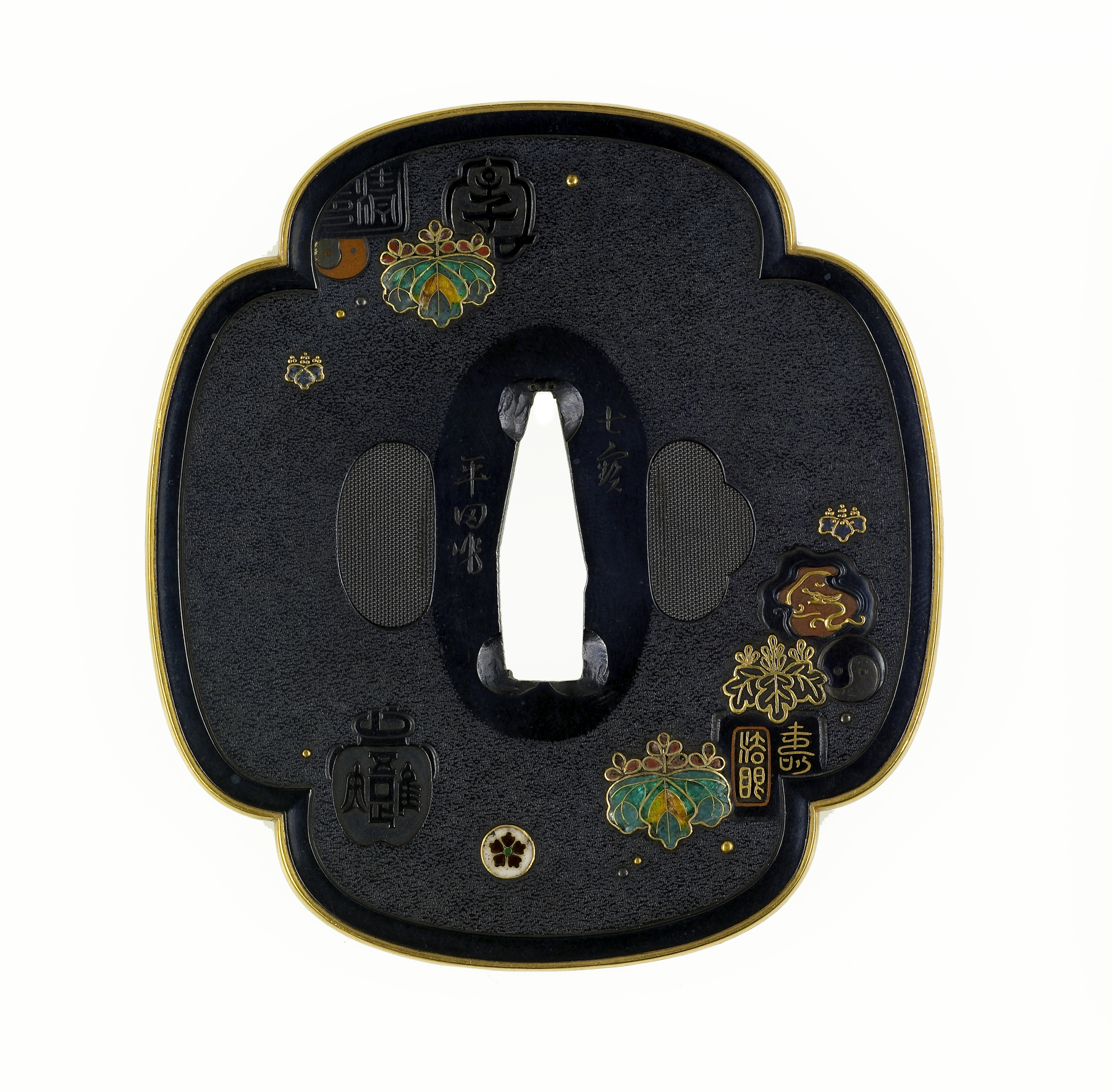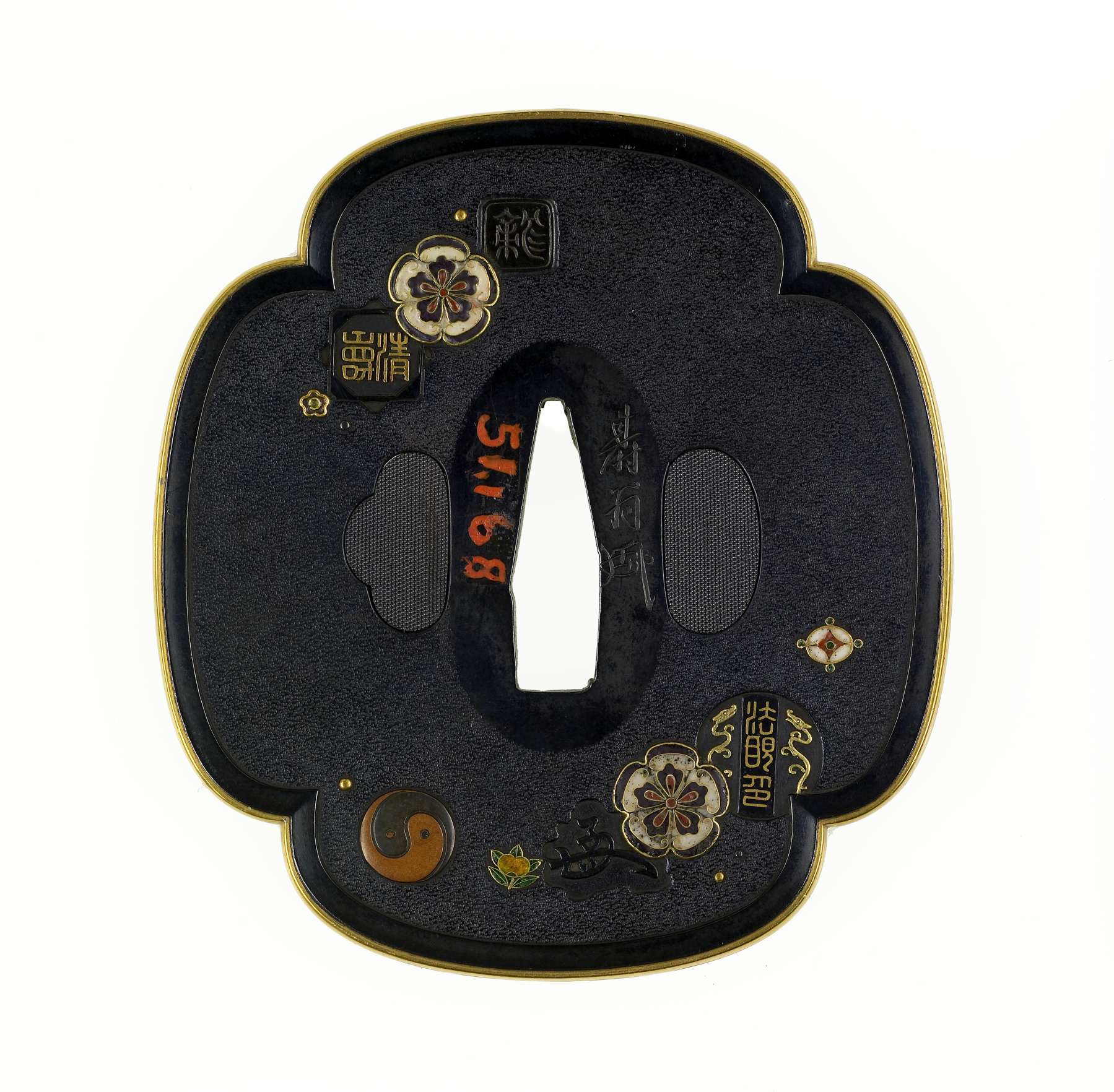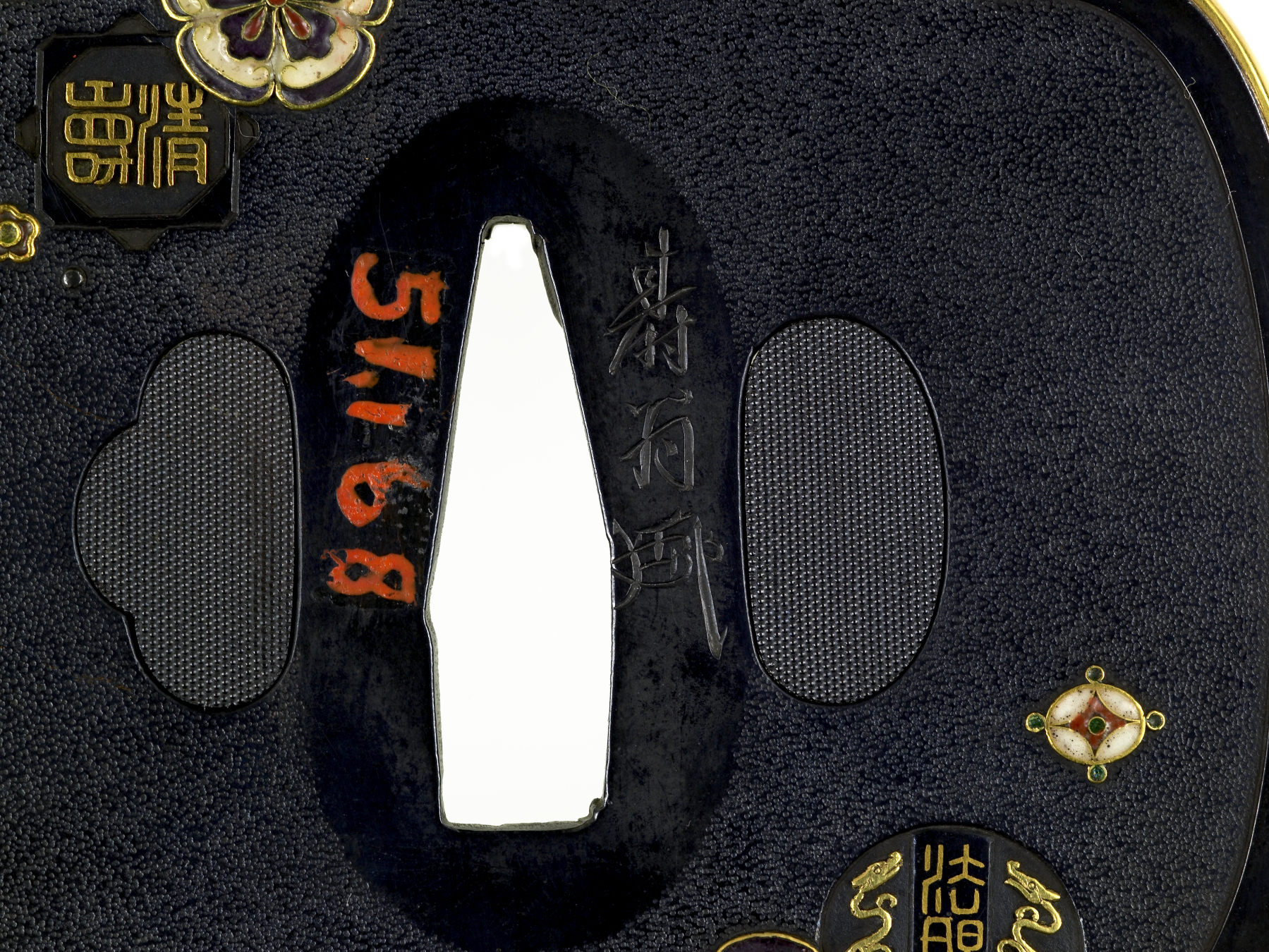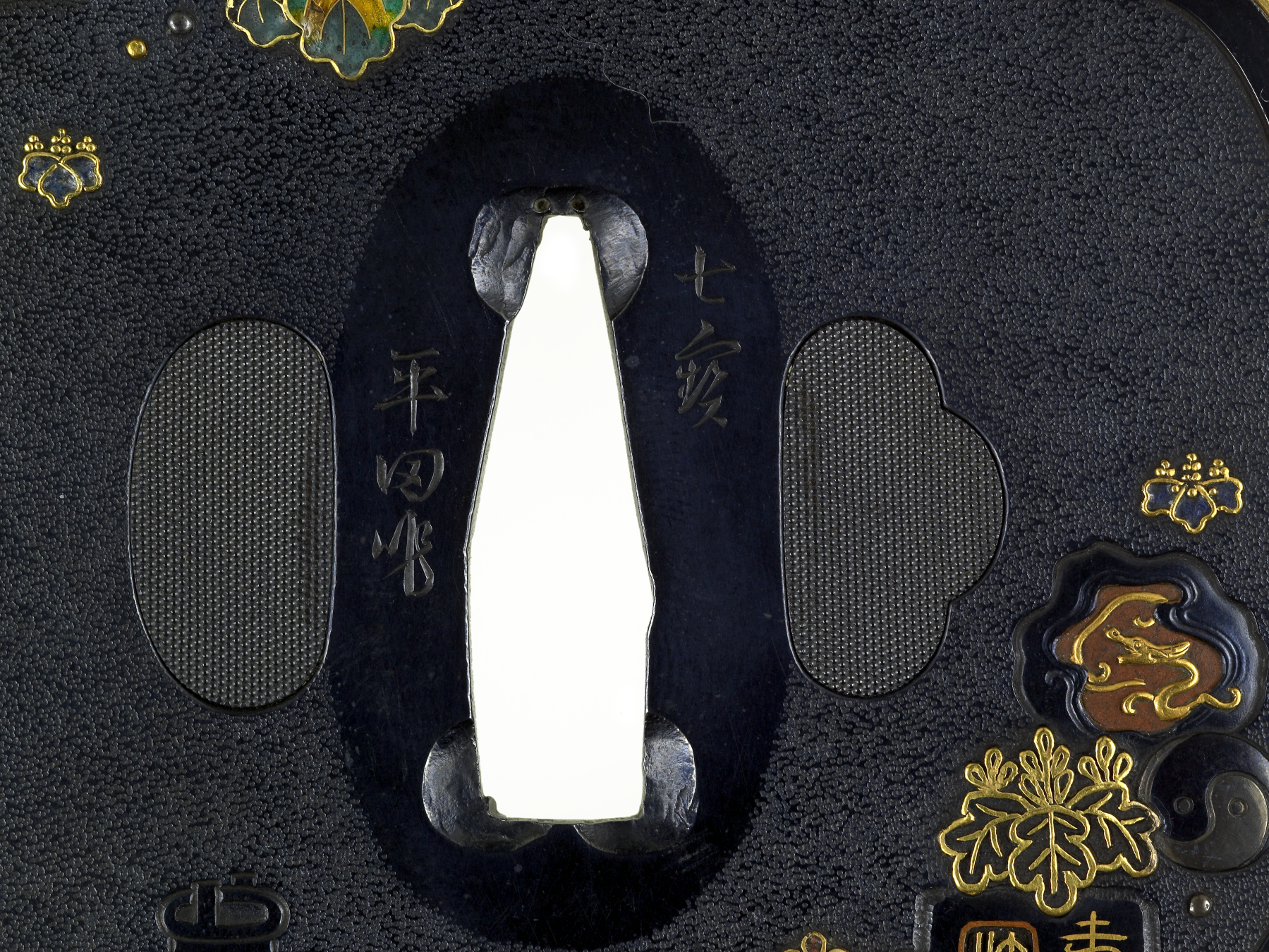Tsuba with Imperial Paulownia Crests and Seals
(Japanese Military Armor)
This tsuba is a collaboration between two artists. The metalwork was done by Masayoshi and the enamel work was executed by a member of the Hirata school of cloisonné artists. Across both sides of the tsuba, various seals and flower crests are interspersed with Taoist symbols. On the front, the flower crests are paulownia.Versions of the paulownia crest were used by the Imperial family and high-ranking warrior families. On the reverse, the crests are cherry blossoms. The edge of the tsuba is gilded in gold.
Inscription
Provenance
Provenance (from the French provenir, 'to come from/forth') is the chronology of the ownership, custody, or location of a historical object. Learn more about provenance at the Walters.
Henry Walters, Baltimore [date and mode of acquisition unknown]; Walters Art Museum, 1931, by bequest.
Exhibitions
| 1989-1990 | Japanese Cloisonne Enamels, Fisher Collection. The Walters Art Gallery, Baltimore. |
| 1984 | The Taste of Maryland: Art Collecting in Maryland 1800-1934. The Walters Art Gallery, Baltimore. |
Conservation
| Date | Description | Narrative |
|---|---|---|
| 4/18/1984 | Treatment | cleaned |
Geographies
Japan, Tokyo (Edo) (Place of Origin)
Measurements
H: 3 3/16 × W: 2 15/16 × D: 3/16 in. (8.1 × 7.4 × 0.4 cm)
Credit Line
Acquired by Henry Walters
Accession Number
In libraries, galleries, museums, and archives, an accession number is a unique identifier assigned to each object in the collection.
In libraries, galleries, museums, and archives, an accession number is a unique identifier assigned to each object in the collection.
51.168








